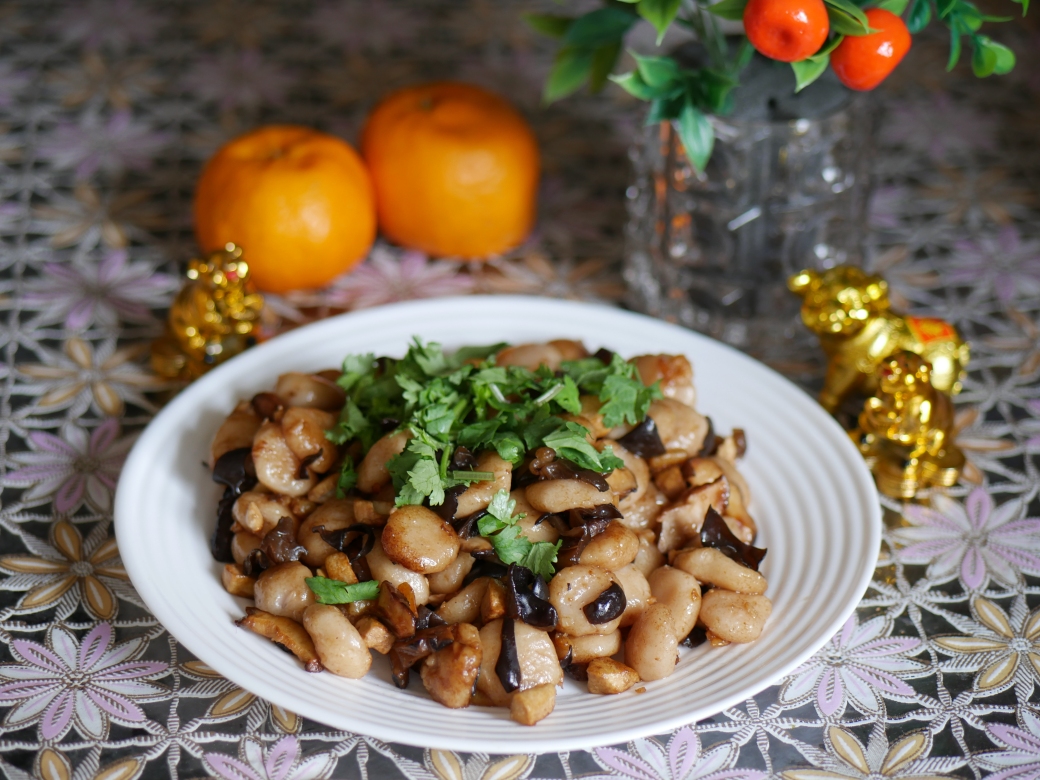Almost every Hakka family knows how to make the iconic Hakka Abacus Seeds and has their own secret recipe. For those who are new to this traditional dish, Abacus seeds is one of the Hakka classics in Chinese cuisine, made up primarily of yam and tapioca flour.
An auspicious Hakka dish that signifies prosperity and yields to overflowing blessings — eating Abacus Seeds during festive celebrations and gatherings (especially Chinese New Year) will help to bring an abundance of wealth into your life.
Aptly named Abacus Seeds, yam goes through a delectable transformation and shaped into discs to look like the ancient Chinese calculator (算盘), which is used as a money-counting device.
The unmissable Hakka Abacus Seeds filled my family’s dining table on every Chinese New Year and until now I still take comfort in this nostalgic dish I grew up eating.
Soft, chewy in texture and full of yam flavour, Abacus seed makes its own strong statement, yet combines excitingly with other tastes and ingredients. In the hands of my mother who knows what to add and what to hold back, she dishes out one of my all-time favourites — Abacus seeds, of course.
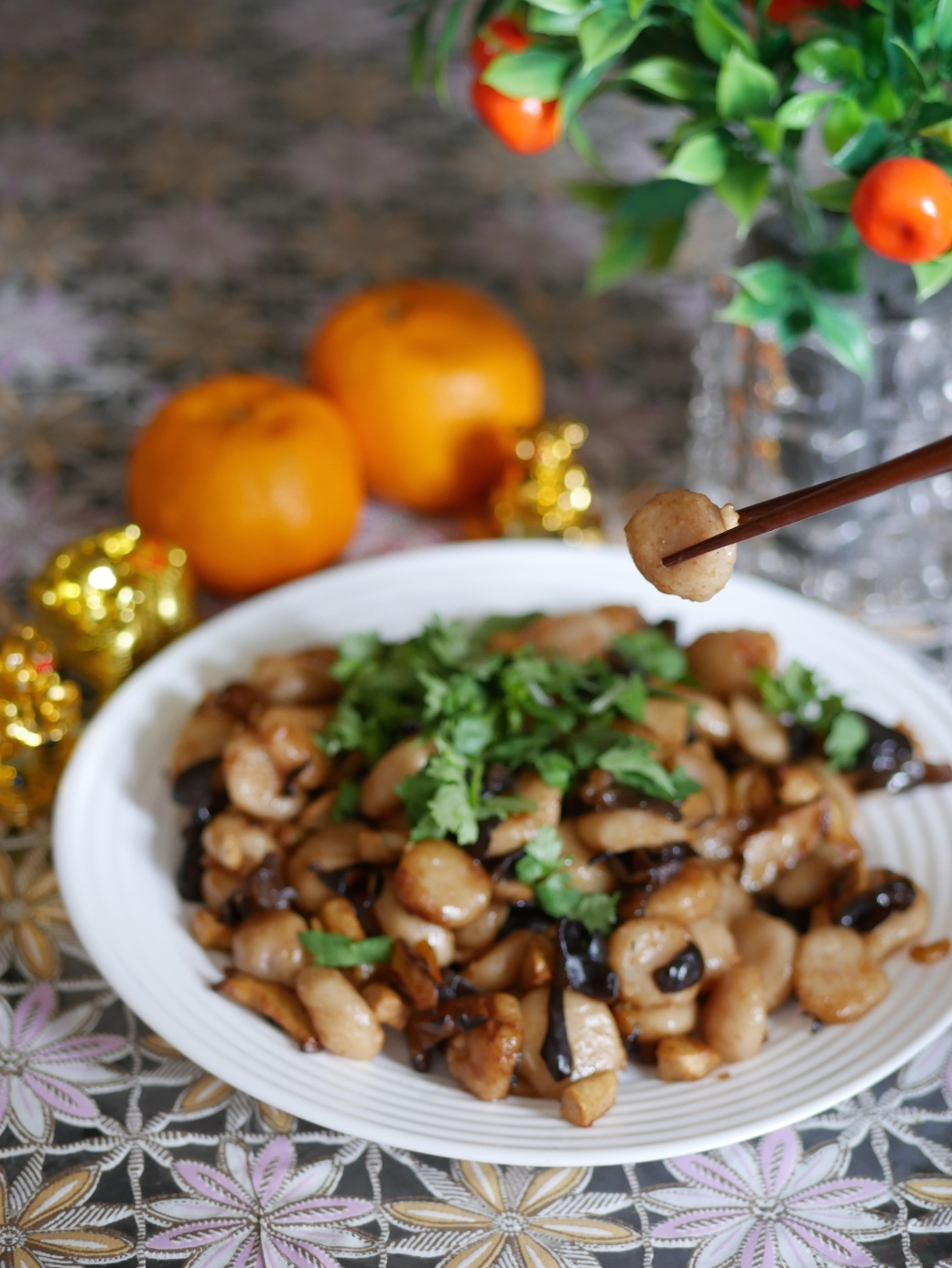
In celebration of Chinese New Year and to keep the Hakka tradition alive, I’ve decided to chronicle my family recipe by compiling this simple tutorial of making Abacus seeds and making this post a gift to my mom who helped me get through difficult times when I was little like a deer caught in the headlights.
The recipe mentioned below can be tweaked according to preference, but I will share a 66-years old Hakka recipe from my most reliable source, my mother.
Raw Ingredients and Seasonings
- 1kg Whole Yam (Serve up 6 to 8 persons)
- 400g Tapioca Flour
- 50g Dried Shrimp
- 60g Dried Shiitake Mushrooms
- 100g Tofu
- 40g Black Fungus
- 3tsp Chopped Garlic
- 3tsp Chopped Shallots
- 3tsp Cooking Oil (making Abacus seeds)
- 1/2tsp Salt (to taste)
- 3tsp Dark Soya Sauce
- 1/2tsp Ground White Pepper
- 2tsp Chicken Stock Granules

Making Yam Abacus Seeds
Peel off the skin of the yam with a paring knife from root to tip. Look out for bruises and damaged spots while peeling.
#Pro-tip: Or simply use a regular potato peeler which is inexpensive and easier to use than a paring knife.
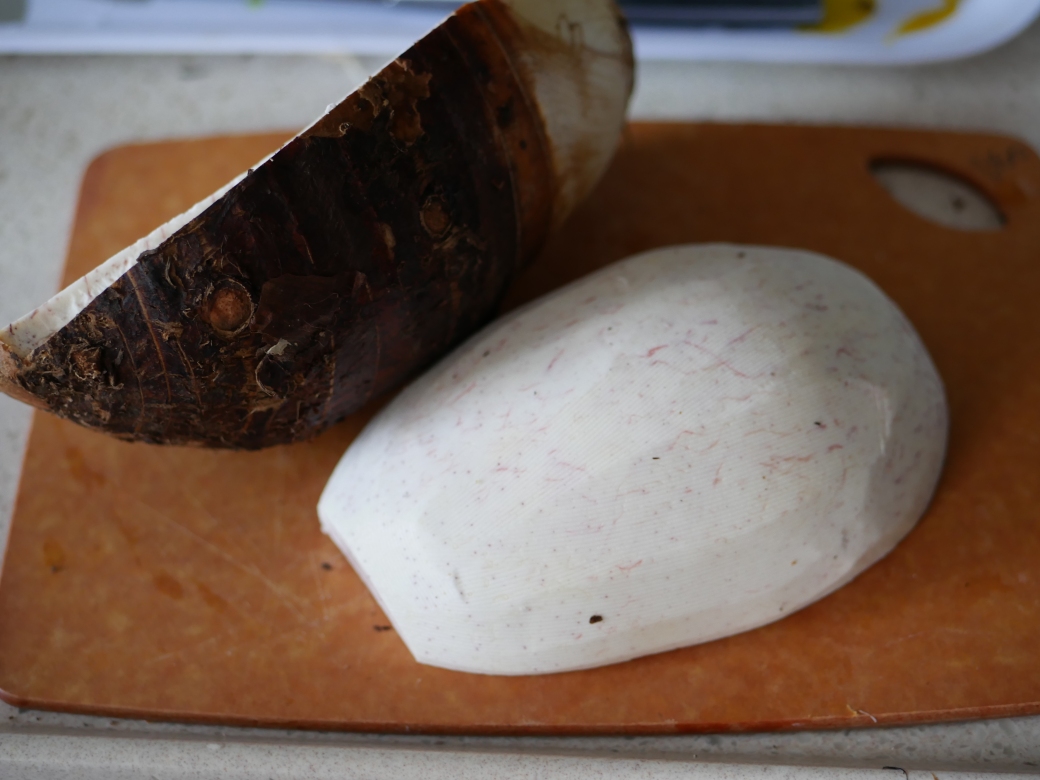
Cut the peeled yam into thick slices and wash the slices before putting them in the pot or saucepan.
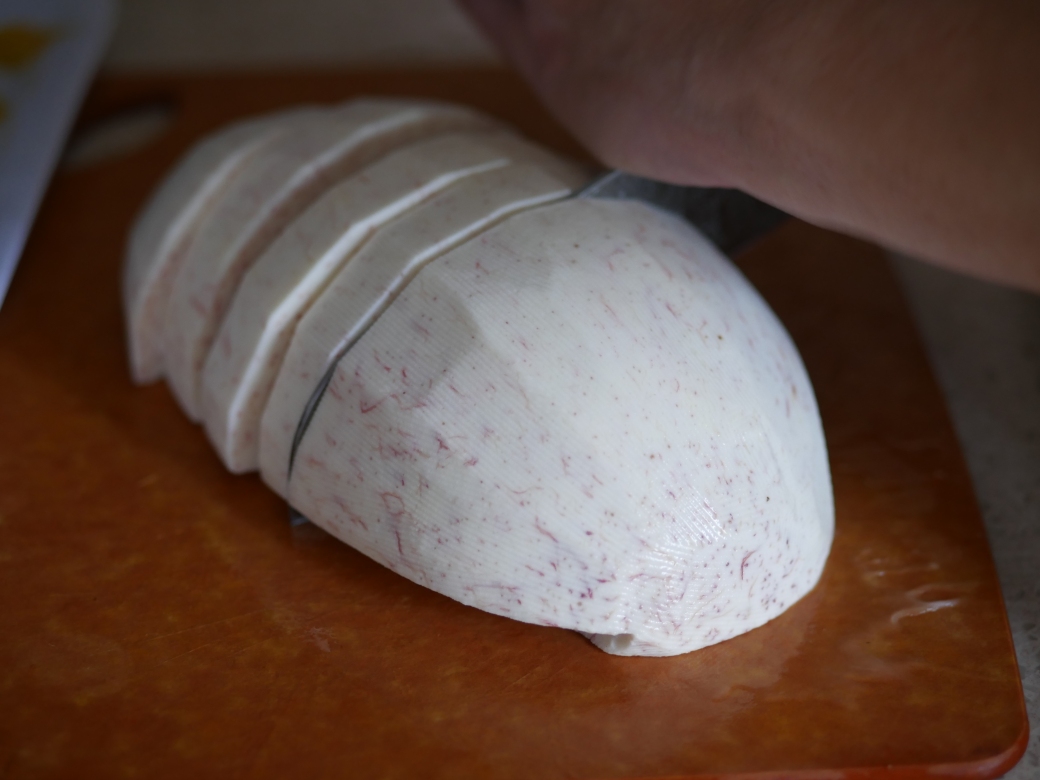
Bring water to boil first and then steam the yam for approximately 30 minutes, till the texture of the yam becomes tender.
#Pro-tip: A quicker way to cook the yam. Boil the yam (with approximately 5 ounces of water) or just enough water to cover the yam in the saucepan and gentle boil for about 10-15 minutes. Check for gradation by piercing the yam with a fork.

When the yams are done, transfer to a stand mixer and mix the yam until it is thoroughly mashed.
#Pro-tip: Alternatively, mix the yam with a spatula manually while hot.
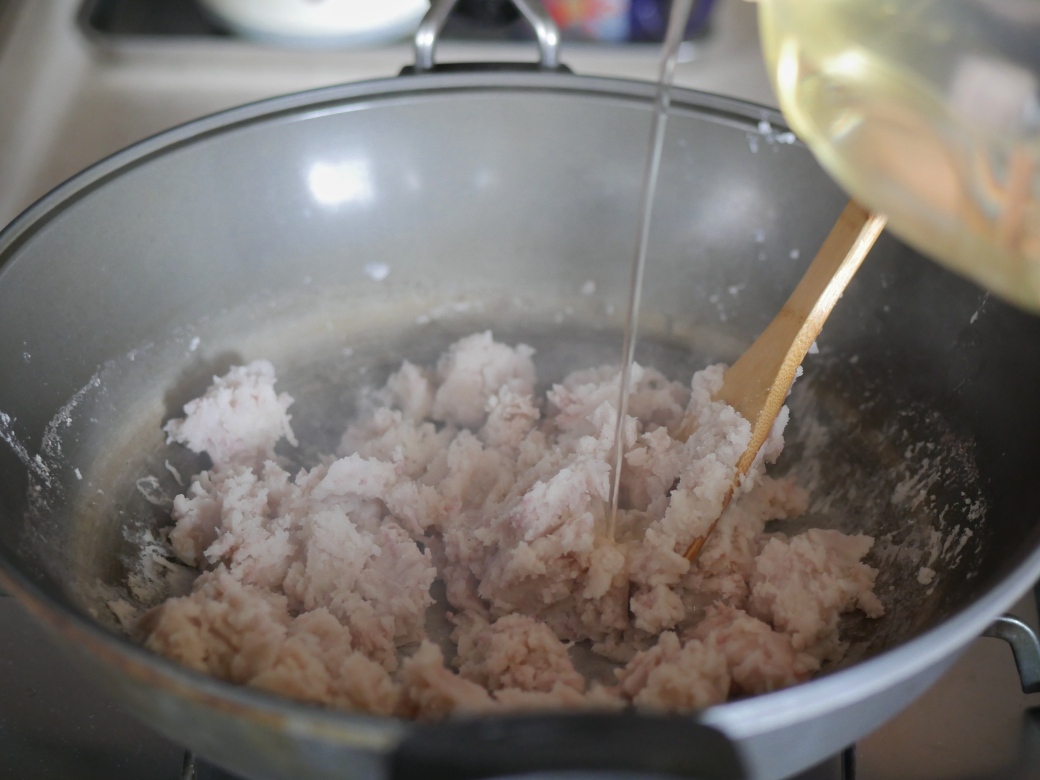
Add in tapioca flour and cooking oil. Continue to mix.
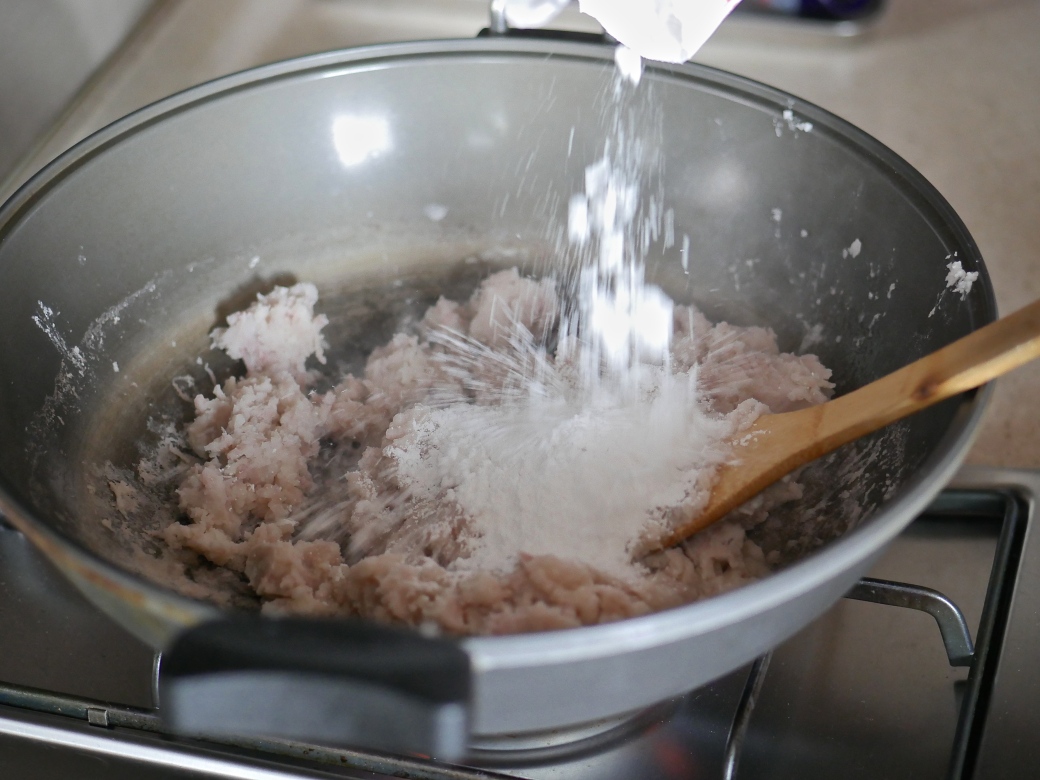
Continue mixing the yam until the dough comes together. If you are using a stand mixer, make sure it is set at the lowest speed.

When you get a pliable dough, remove from the stand mixer.
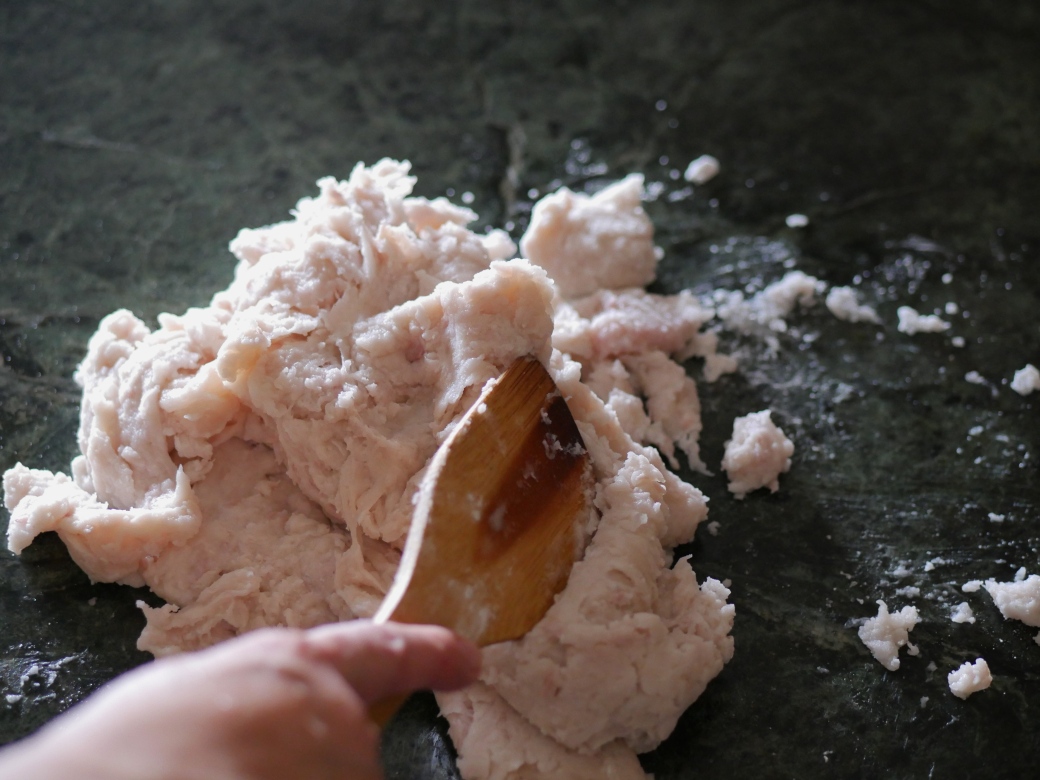
No stand mixer? No problem. You can still knead the dough with your bare hands. Lightly flour your hands, throw some flour on the table and roll the yam into log-shape.
#Pro-tip: Dough kneading works best on flat marble surfaces. If you don’t have a marble table or countertop, you can work on a quartz (granite) countertop, or simply cover the table with sheets of wax paper which is a less-expensive substitute for parchment paper.

When done with the rolling of dough, divide the dough into smaller pieces (about 5gram or as desired).
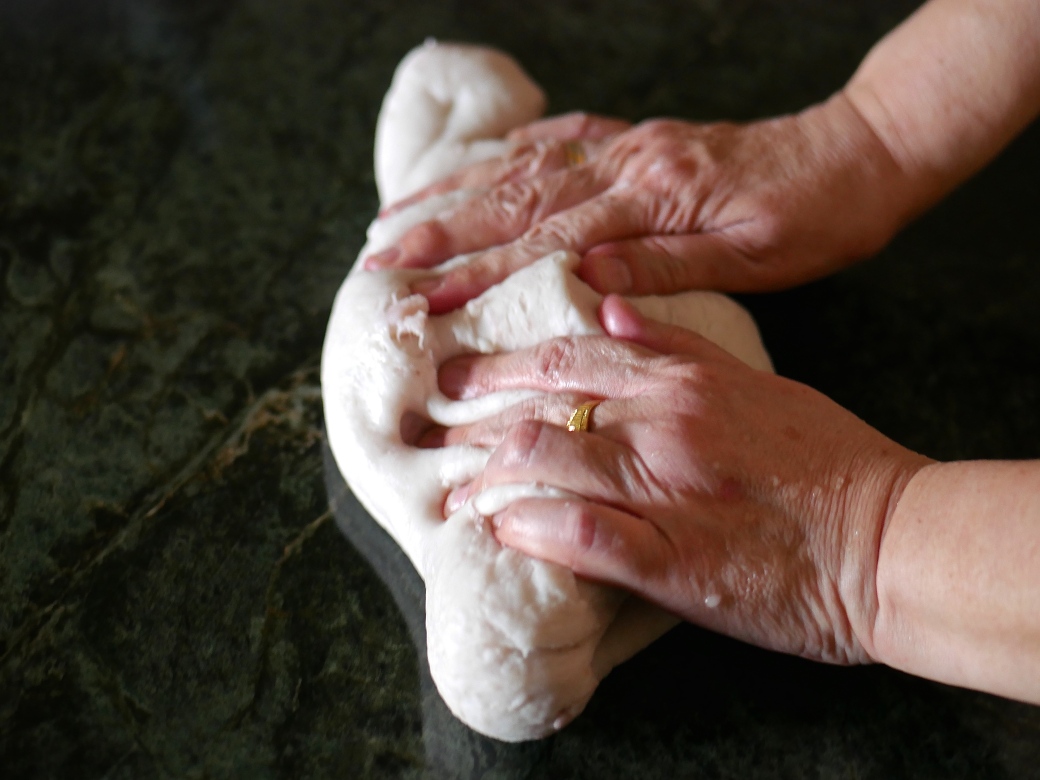
Roll each piece of dough in between your palms to form round balls.
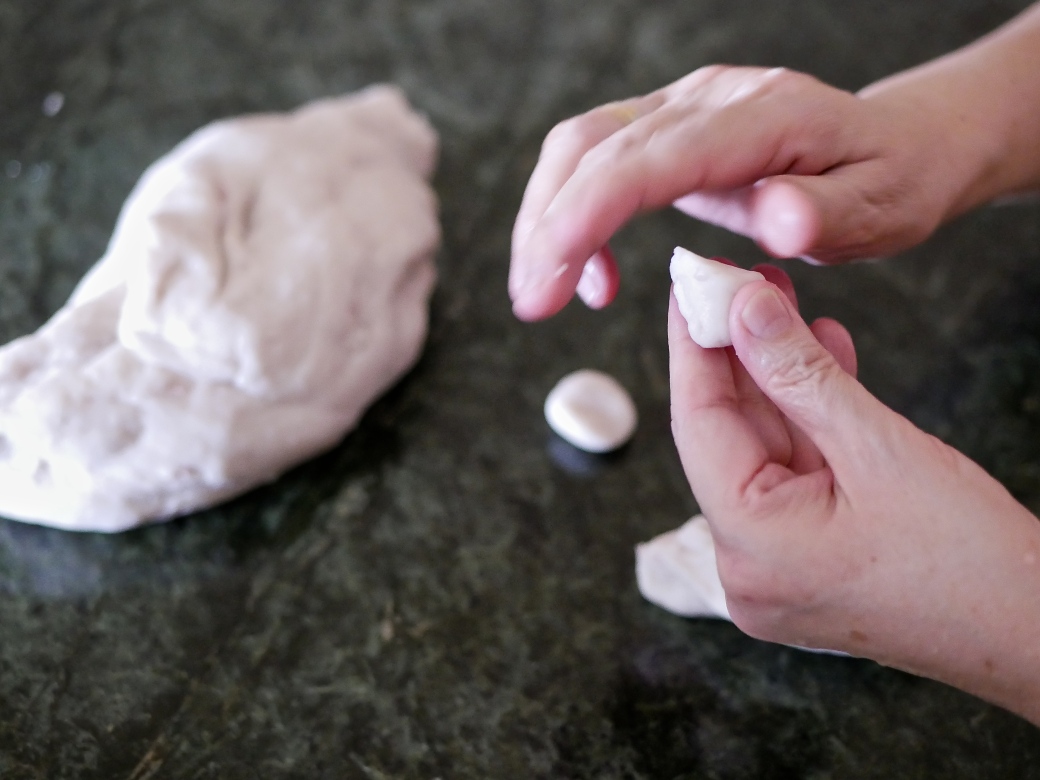
Use your index finger to press the centre of the ball, making a slight depression to create the abacus seed.
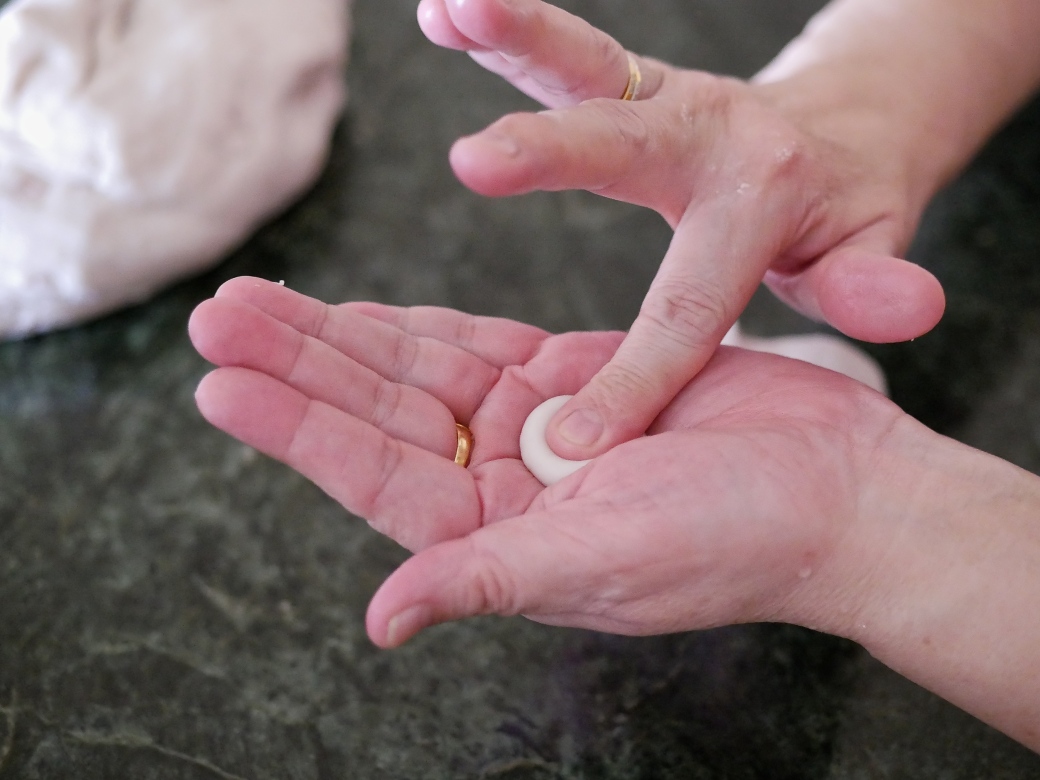
Continue to work on the remaining dough by repeating the last two steps.
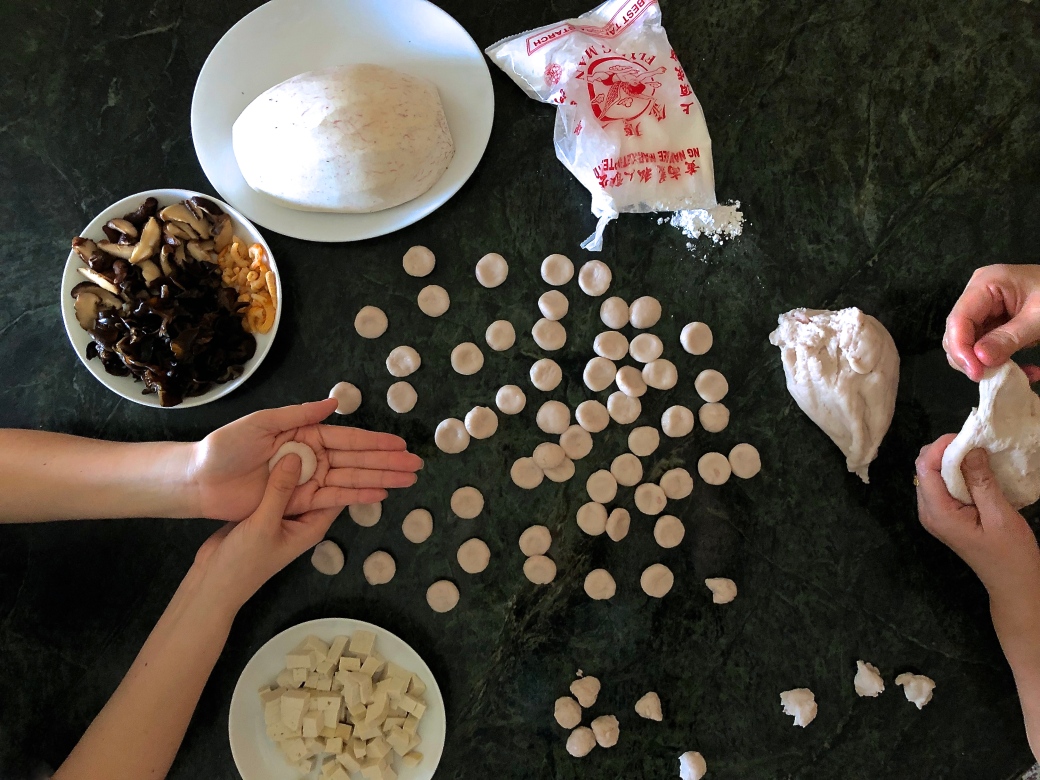
Cooking Yam Abacus Seeds
Bring a pot of water to boil and add in the yam abacus seeds in batches.

Do stir continuously to prevent the yam abacus seeds from sticking together.
#Pro-tip: Remove the abacus seeds from the boiling water when you see them floating on the surface.

Set the abacus seeds aside and wait for it to cool down to room temperature.
#Pro-tip: Quick rinse the yam abacus seeds in cold water, drizzle over with cooking oil and coat evenly to prevent sticking.
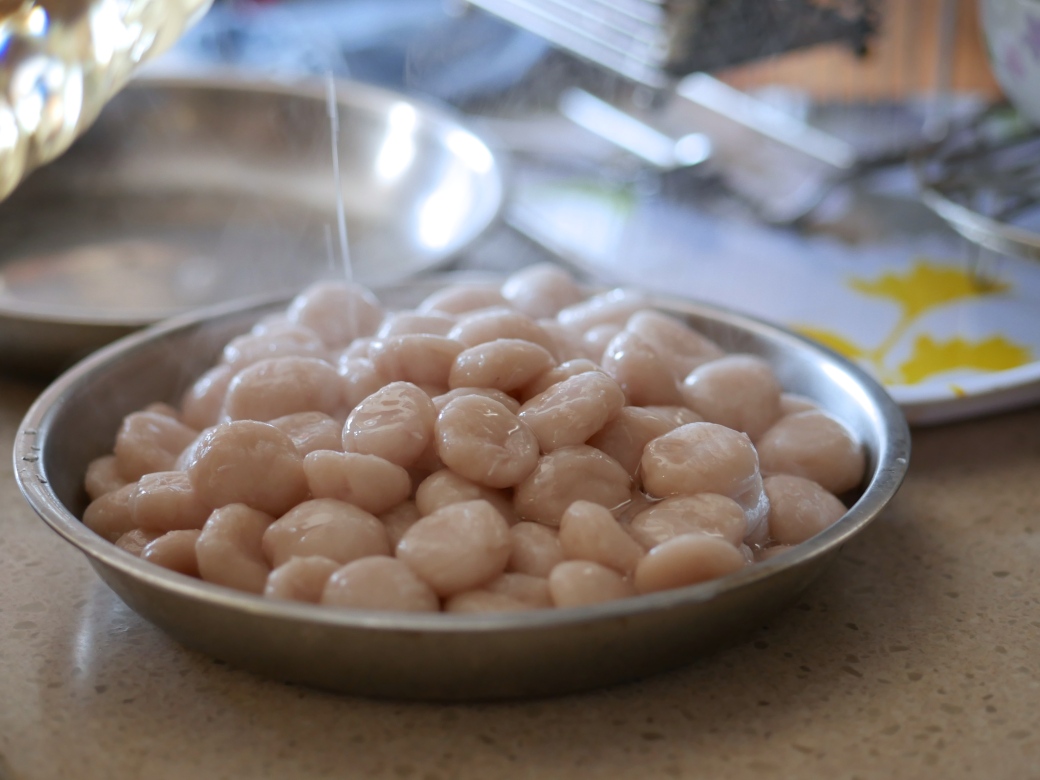
While setting the yam abacus seeds aside, you can start preparing the ingredients to stir fry.
Dried shrimps, shiitake mushrooms and black fungus must soak in water first and then cut into stripes.
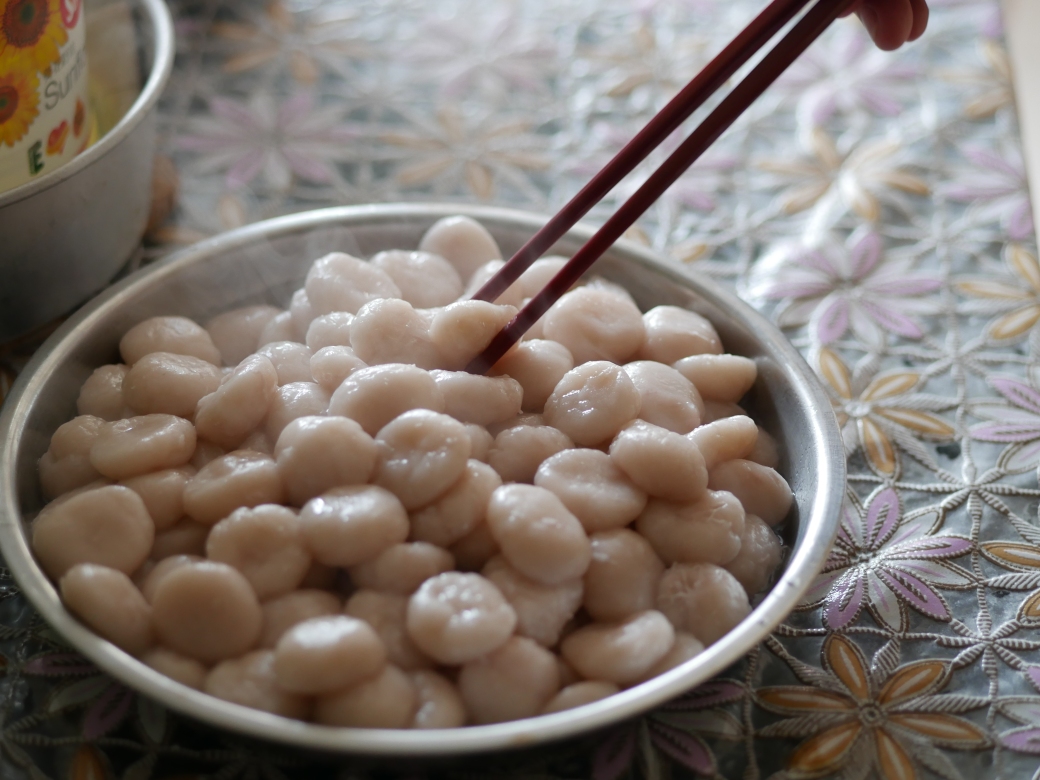
Traditionally, cuttlefish and minced meat were used in making the abacus seeds dish. My family omit these ingredients and substitute with Chinese tofu, typically the yellow tau kwa for its firm meat-like texture and great for stir-fry dishes.
I was told by my mum that the wet markets and supermarts have limited supplies of yellow tau kwa, and it may soon become obsolete. She succeeded with white bean curd which worked perfectly for me.
Stir-Fry Yam Abacus Seeds
Heat up cooking oil in wok and saute chopped garlic and shallots till fragrant.
Add in dried shrimps, dried shiitake mushrooms, black fungus and tofu cubes, and mix everything well.
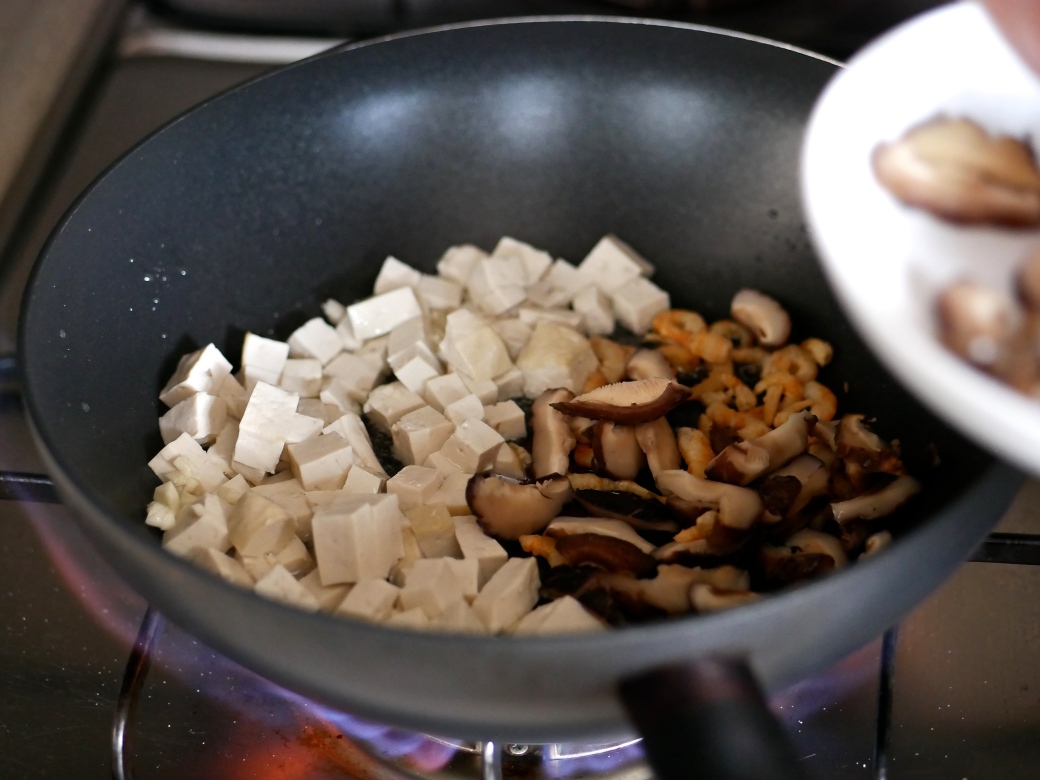
Stir fry the ingredients until golden brown and fragrant, then add in the cooked yam abacus seeds and mix well.
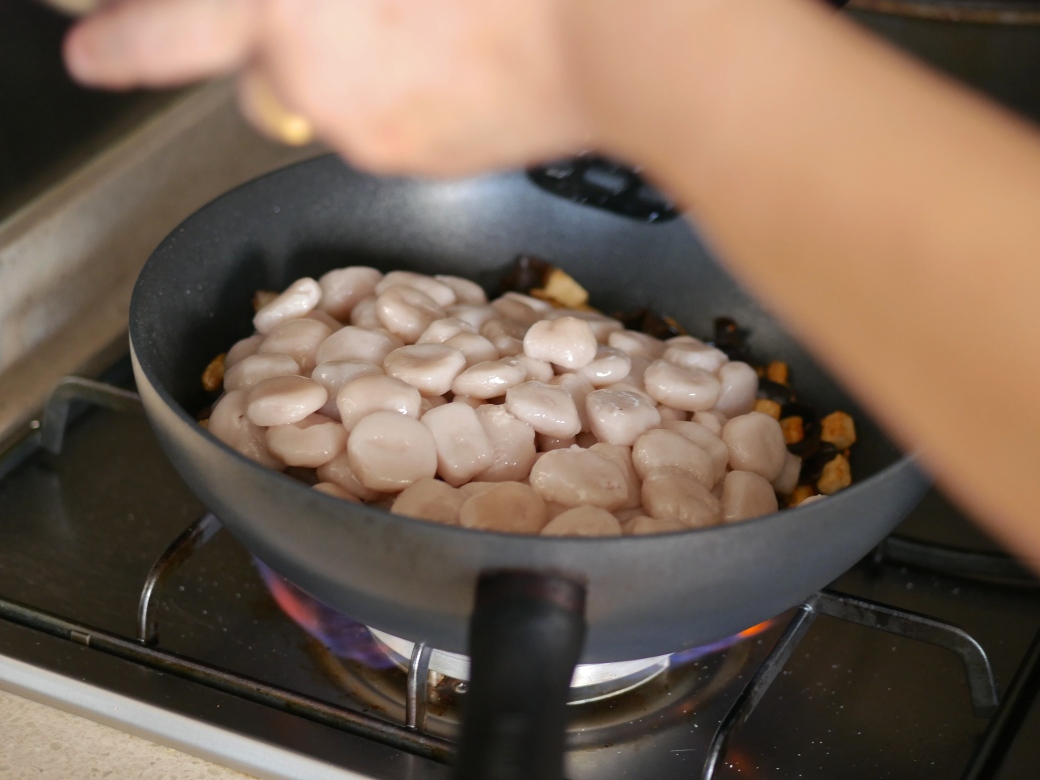
Add seasoning for taste.
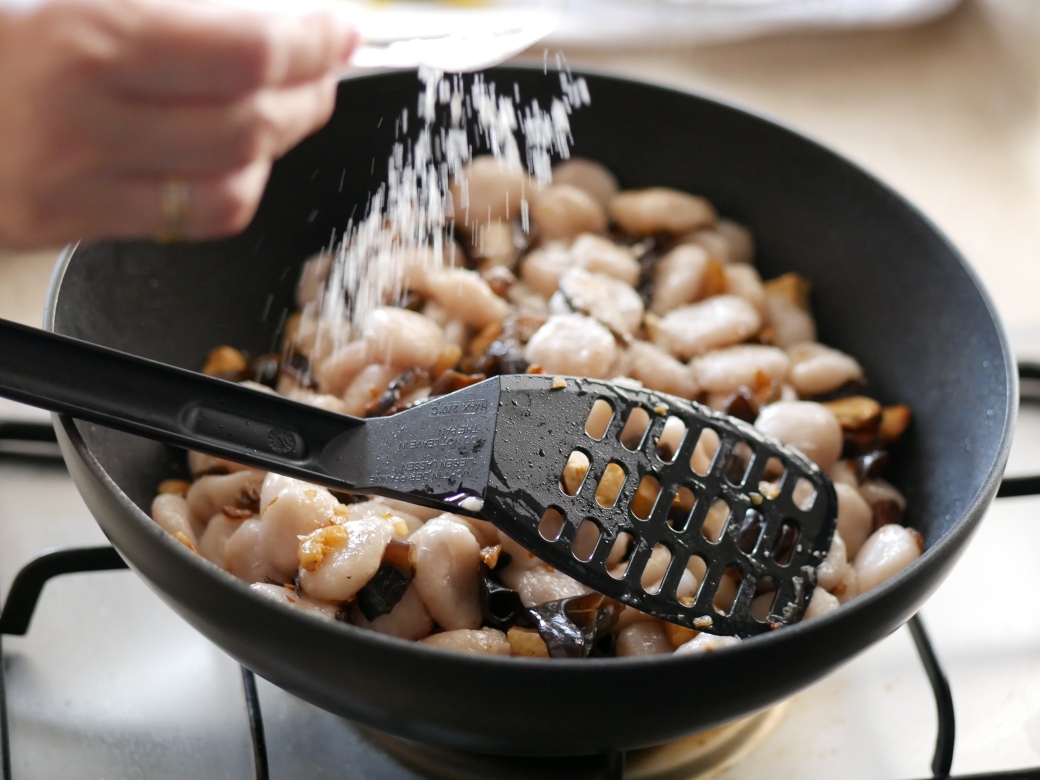
Mix in with dark soya sauce for colour and taste.
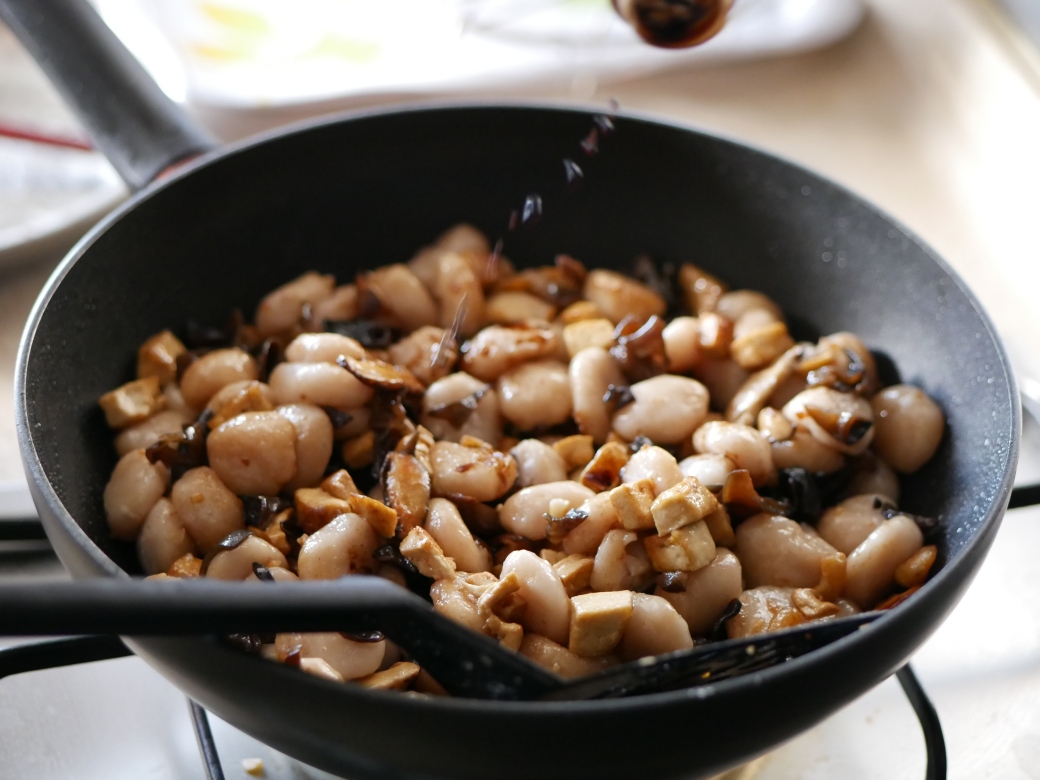
Stir fry until the seasoning sauce dries up and serve warm.
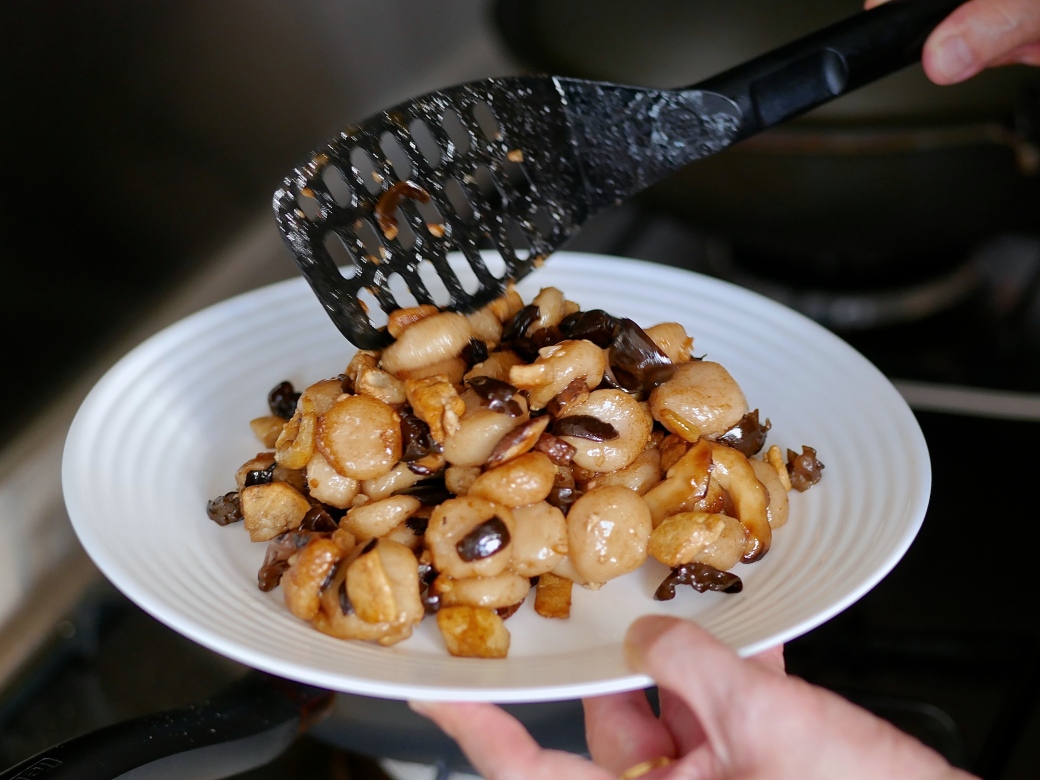
Garnish with Chinese coriander and red chilli, if necessary.
